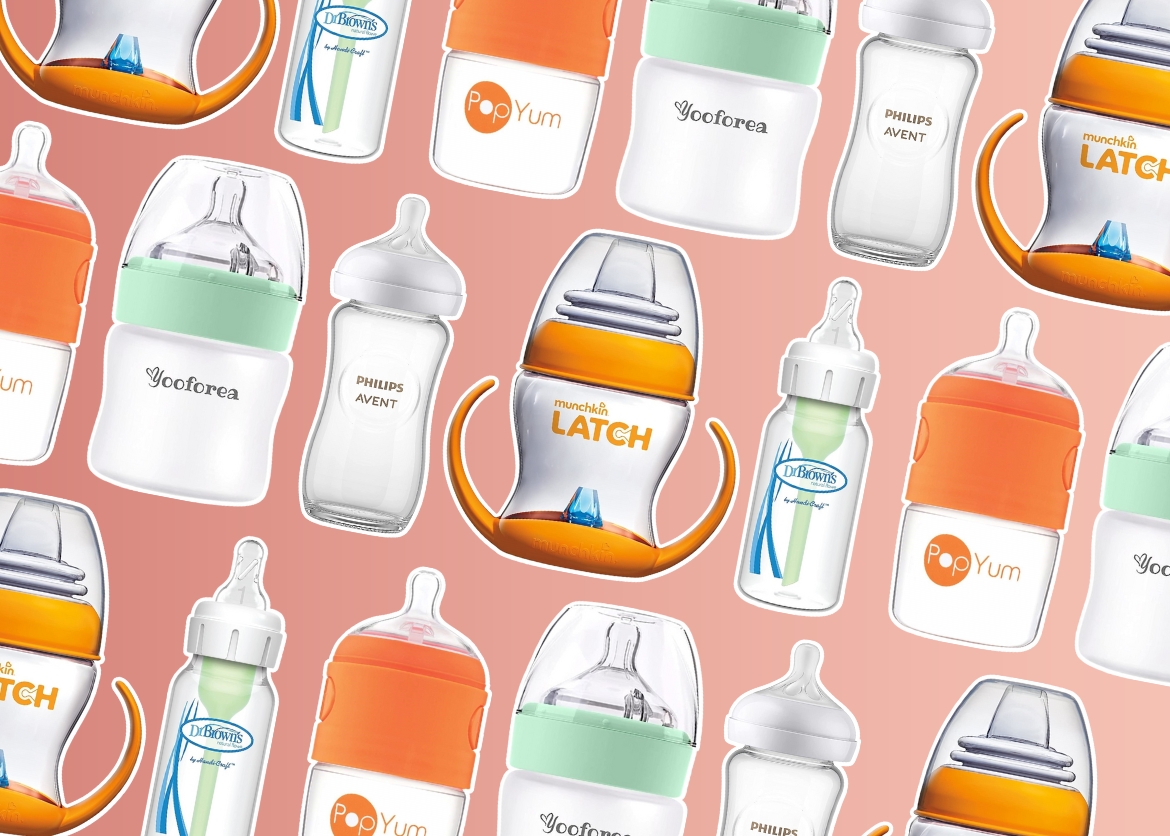
![]()

Whether you use formula or pump breast milk for your tiny human, bottles are a significant part of raising babies. Whether you’re a first-time parent or new to bottle feeding, you might not know that not all bottles work for every baby or every family. Read on for a breakdown of the types of bottles and our favorite picks of the best baby bottles for productive feeding.
Quick Contents
Types of Baby Bottles
Baby bottles come in one of three major materials and two approximate sizes.
- Plastic baby bottles: These are the most common and, typically, the most affordable. Plastic bottles are durable, lightweight, and available in various styles. They are the most easily accessible in stores. However, extra care should be taken when handling plastic bottles, as they cannot be microwaved and will not necessarily be suitable for the dishwasher. Plastic bottles are the most likely to streak and become discolored over time.
- Glass baby bottles: These bottles are made from durable tempered glass, making them an excellent, chemical-free option for environmentally conscientious families. Glass bottles are easy to clean and thoroughly sanitize; they can be safely placed in the dishwasher and tend to maintain their clarity. On the flip side, these bottles are heavier and tend to come at a higher cost than plastic bottles and can break.
- Silicone baby bottles: Silicone baby bottles are rising in popularity and are flexible, free from chemicals, and relatively lightweight. Their uniquely squishy feel mimics the breast much more than glass or plastic, making them baby-friendly and easy to hold. Silicone bottles tend to cost more than plastic while presenting similar concerns regarding material longevity.
Other Considerations
Regardless of material, most bottles come in small and large sizes. These typically hold 4 oz. or 8 oz. of breast milk or formula, respectively. In addition, bottle nipples come in multiple sizes. Preemie, newborn, and slow-flow nipples exist for younger and smaller babies or others needing a slower flow of breast milk or formula. Faster-flow nipples are for older babies who can tolerate faster-flowing milk.
How To Determine Whether You Need Bottles
Assuming your newborn doesn’t have medical or developmental needs prolonging the ability to bottle feed, you can use bottles from day one through one year.
Even if you plan to breastfeed exclusively, it’s a good idea for new parents to have a bottle or two on hand. There are numerous reasons for this. First, it can often take several days for a new mother’s milk to come in or to establish breastfeeding. Second, it’s wise to prepare in case someone else has to feed your baby. Having a bottle or two within reach before you welcome your little one is a wise proactive measure for all parents-to-be.
If you plan to bottle feed from the start, you’ll need however many bottles you feel are necessary to comfortably make it through each day. Some families do fine with a few bottles to save space and cut back on loose parts to keep up with (which can add up quickly, depending on your chosen bottle). Others prefer to have as many bottles as there are feeds in a day to reduce time spent washing by hand between feedings. For exclusively bottle-feeding parents, this number is typically between 8-10 in the newborn stage. Pro-tip: It can be helpful to start with at least a small variety of bottles, as some babies take to one brand or type more than others.
Chick Picks: Best Baby Bottles of 2023
After comparing parent reviews and doing thorough research on these bottles, we’ve compiled our favorites that made our Chick Picks below. We hope this list helps take some guesswork out of the bottle-buying process.
